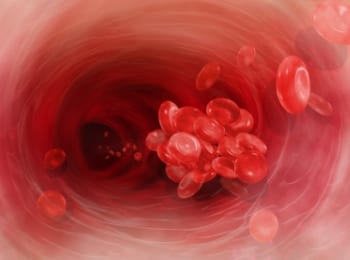
This Monday acting Surgeon General Steven K. Galson issued a Call to Action to reduce the number of people in the United States affected by two serious blood clotting conditions: deep vein thrombosis and pulmonary embolism.
DVTs & PEs
Deep vein thrombosis (DVT), sometimes called “economy class syndrome” is the formation of a blood clot in a vein deep within the body, usually in the legs. Pulmonary embolism (PE) occurs if the clot breaks free and travels through the circulatory system to the lungs. Together these two conditions affect an estimated 350,000 to 600,000 Americans each year and contribute to at least 100,000 deaths.
“Deep vein thrombosis and pulmonary embolisms are often ‘silent’ conditions – they can occur suddenly and without symptoms,” Galson said in a statement. “But we have made a lot of progress in understanding how these disorders develop and how to prevent, diagnose, and treat them. It’s time to put this knowledge into action.”
Factor V Leiden
Researchers have found that DVT and PE usually develop in response to a triggering event — being hospitalized or confined to bed rest, having major surgery, suffering a trauma, or traveling for several hours — in people who either have an inherited predisposition to blood clotting disorders or another risk factor.
Having the riskier version of one or both of the SNPs 23andMe reports data for (Factor V Leiden and Prothrombin 20210) significantly increases the risk of developing DVT or PE. An estimated 15 to 20 percent of DVT/PE patients have the Factor V Leiden mutation, while 6 percent have the Prothrombin 20210 mutation.
Risk
The average risk of DVT/PE in people between the ages of 40 and 59 (anyone can be afflicted, but the risk does increase with age) is 2.5%. But in those people in this age group who inherit a copy of the Factor V Leiden mutation, the risk jumps to 11%. Having one copy of the Prothrombin 20210 mutation raises the risk to 8.8%. In the unlucky few who have one copy of each of these mutations, the risk is a 32%. And in the extremely rare case that someone inherits two copies of both mutations, the risk of DVT/PE is 69%.
(This information applies only to those with European ancestry. Average risk numbers are different for other groups, and the genetic risk factors discussed here are not usually found in people with African or Asian ancestry.)
Other risk factors for DVT and PE include being overweight or obese, cancer and its treatment, pregnancy, and childbirth, use of hormones for birth control or menopause, and smoking.
“We want to increase the awareness and knowledge of these potentially deadly conditions and encourage patients and health care providers to take the steps to prevent them,” Galson said.
For more information: